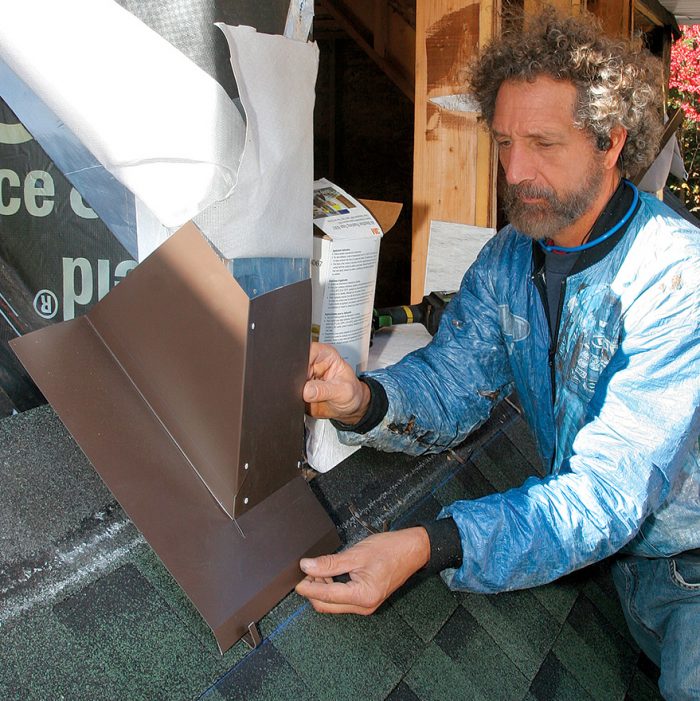
A good roofer should be an expert at installing roofing, of course. But roofing jobs need more than roofing—they also need flashing. Even if roofing is perfectly installed, a flashing error can lead to major leaks and rot.
Roofers should install flashing:
- At the perimeter of most roof planes, including at eaves, rakes, valleys, and ridges;
- At penetrations like vent pipes, chimneys, and skylights;
- Where roofs meet walls or dormer cheeks;
- At locations where dribbling water may lead to rot.
Code requirements
In the 2018 International Residential Code, flashing requirements can be found in Section R903.2. According to the IRC, “Flashings shall be installed at wall and roof intersections, wherever there is a change in roof slope or direction and around roof overhangs. A flashing [kickout flashing] shall be installed to divert the water away from where the eave of a sloped roof intersects a vertical sidewall.”
The terms used to describe roof flashing usually refer either to the location or purpose of the flashing. Flashing types include dripedge, kick-out flashing, step flashing, ridge flashing, chimney flashing, vent pipe flashing, valley flashing, skylight flashing, and flashing associated with roof-mounted PV arrays.
Flashing profiles (and flashing methods) vary depending on the type of roofing being installed. Roofers who install asphalt shingles usually use generic flashing pieces that are widely available, while installers of less common types of roofing (including metal roofing and concrete tile roofing) may need to buy proprietary flashing profiles from the roofing manufacturer or bend their own flashing pieces with a brake.
Until about 1970, all roof flashing was made of metal—generally copper, lead, galvanized steel, or aluminum. In recent decades, however, plastic materials, rubberized materials, and peel-and-stick products have begun to be substituted for some types of traditional metal flashings.
For information on different flashing materials, see…
Weekly Newsletter
Get building science and energy efficiency advice, plus special offers, in your inbox.

This article is only available to GBA Prime Members
Sign up for a free trial and get instant access to this article as well as GBA’s complete library of premium articles and construction details.
Start Free TrialAlready a member? Log in





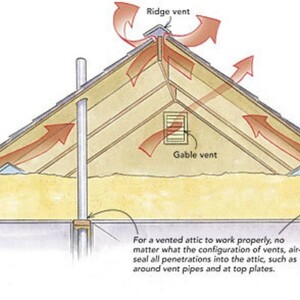
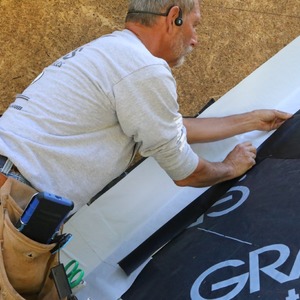
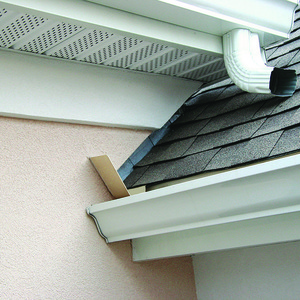
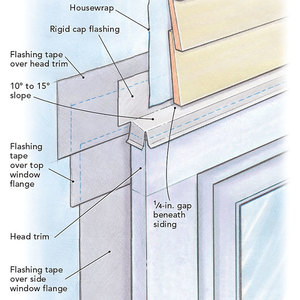






7 Comments
Excellent. The only thing you omitted it the immense fun installing flashing can be. It's one of the jobs I look forward to, and why I particularly enjoy installing metal roofs. It's akin to doing a puzzle designed specifically for those with OCD. Luckily my own roof is a mess of cut up planes and dormers, so when re-roofing I got to enjoy it for quite a while.
“[Deleted]”
Hi, what do you use/recommend around a woodstove chimney? Thanks.
AN,
- Sloped or flat roof?
- What is the roofing? Metal, shingles, membrane?
A.N.,
What type of chimney: Brick? Block? Stainless steel?
Is there a benefit of using a flashing boot vs. a neoprene flange on the plumbing vent? Thanks.
A.N.,
Commercial products sold for this purpose (plumbing vent flashing) contain several components, including a product that seals around the pipe and some type of apron that is parallel to the roof. This apron may be made of aluminum, copper, rubber, or plastic.
Quality of the products varies; quality is often proportional to price. Inspect the product before you install it. Cheap products are worth what you pay.
Log in or become a member to post a comment.
Sign up Log in